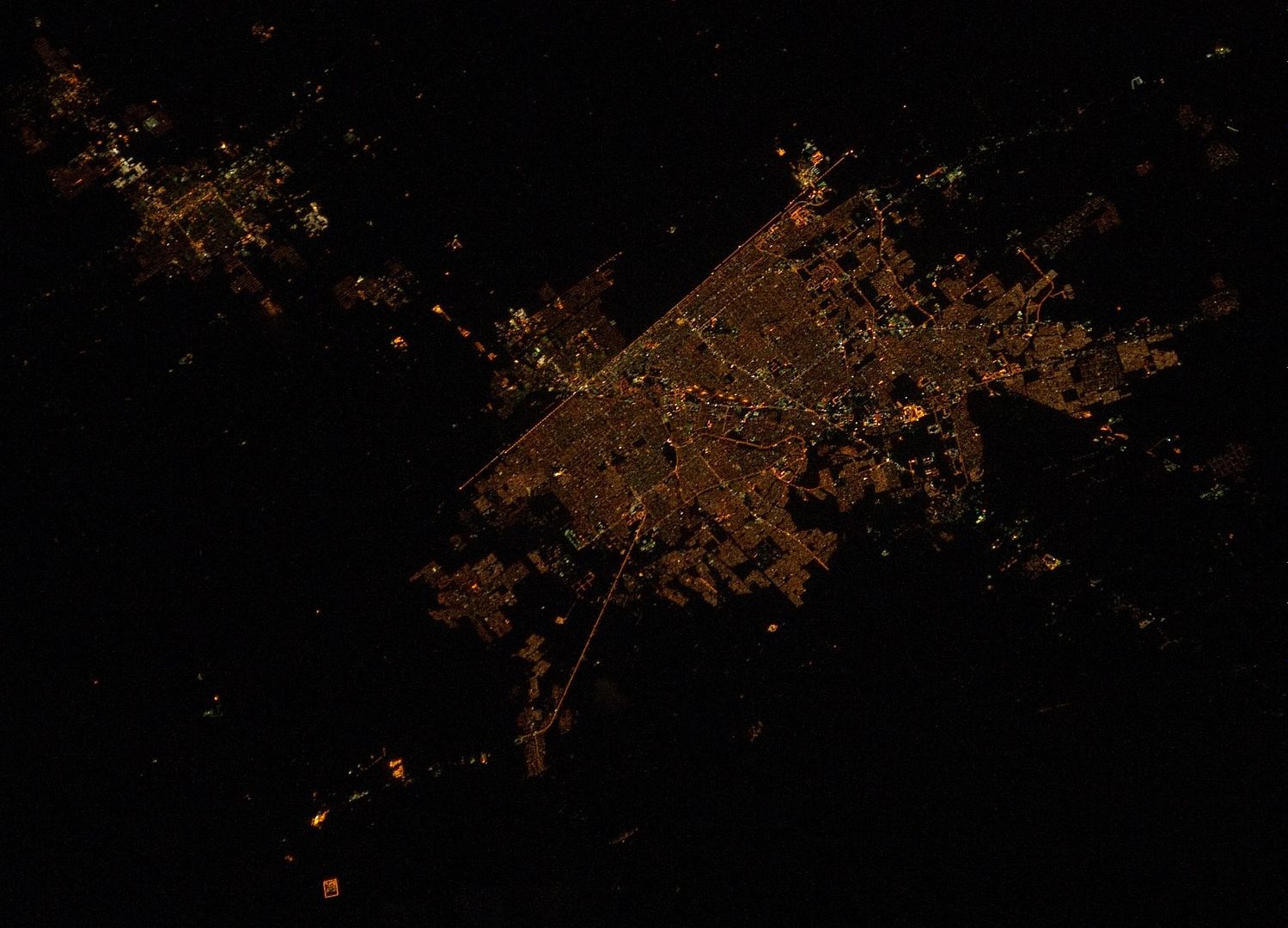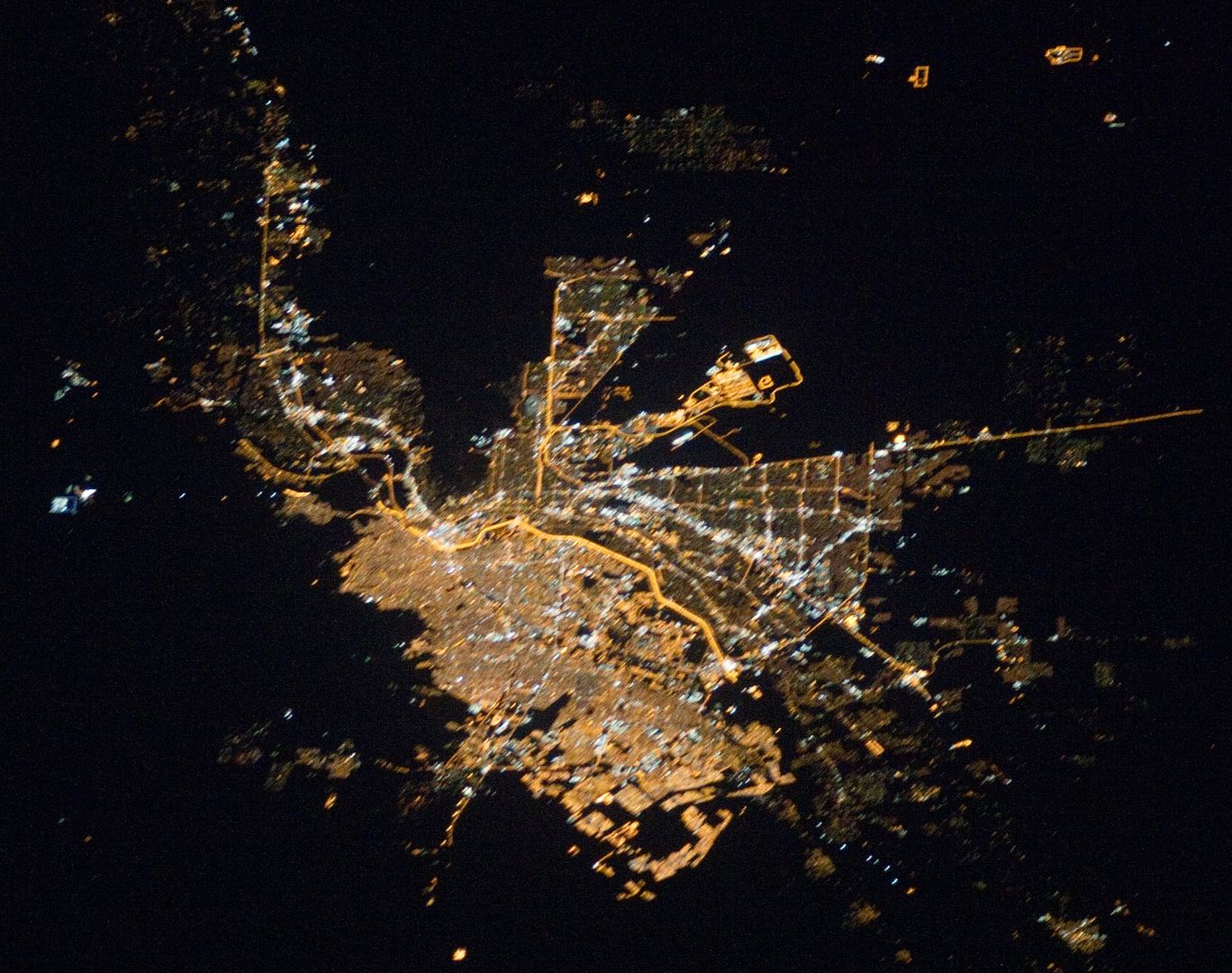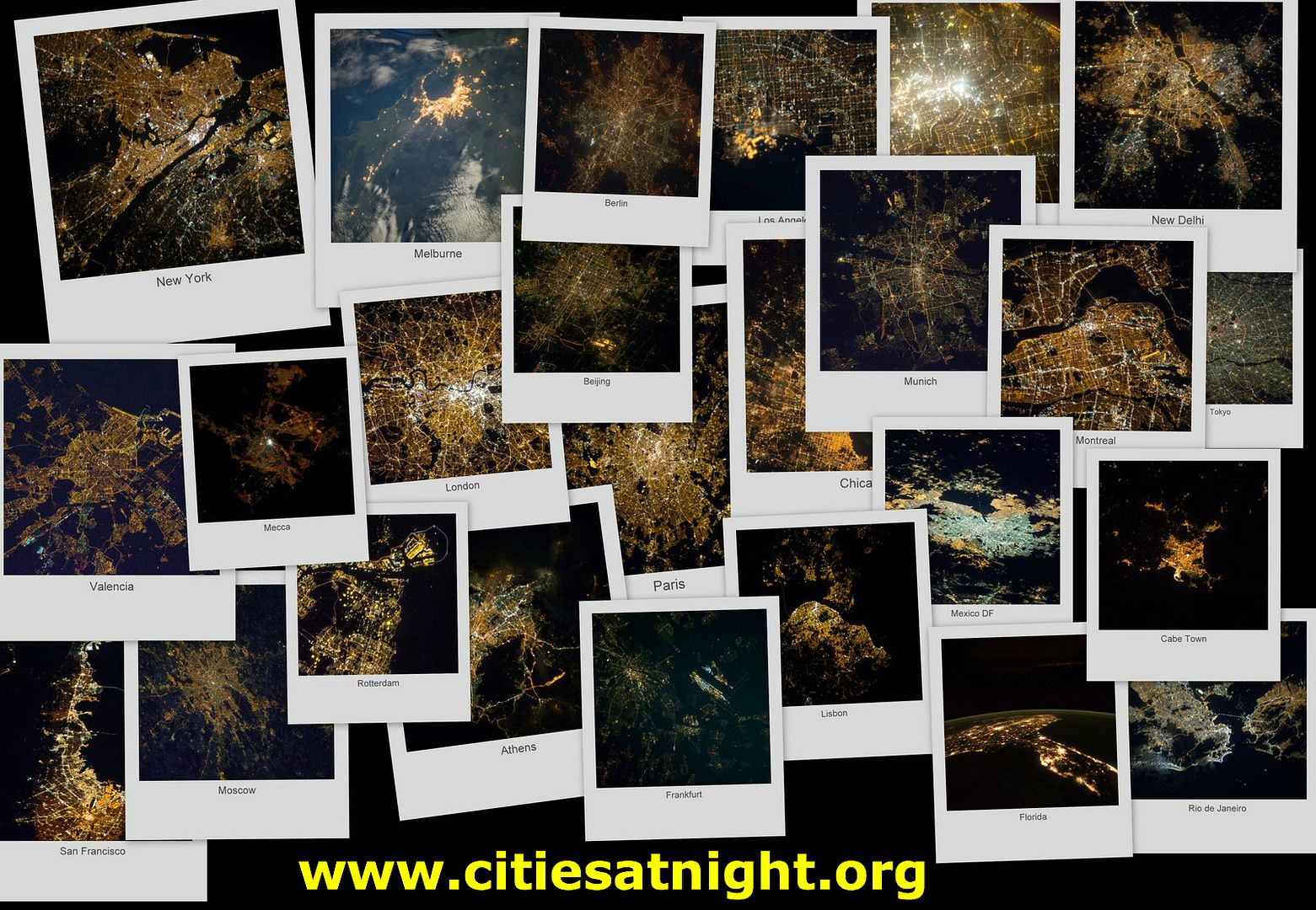Today, our astronauts don't voyage as far from home, but they still are giving us interesting views of our home world. Here's an example - a nighttime photo from the International Space Station showing portion of the U.S.-Mexico border:
 |
| Image from ISS Expedition 30 Crew. Credit: Earth Science and Remote Sensing Unit, NASA-Johnson Space Center. The Gateway to Astronaut Photography of Earth. |
 |
| Image from ISS Expedition 26 Crew. Credit: Earth Science and Remote Sensing Unit, NASA-Johnson Space Center. The Gateway to Astronaut Photography of Earth. |
My Cities from Space posts are the most popular ones on my blog and some of the readers here will be interested knowing that there's a new citizen science project called Cities at Night that has an amazing database of such images from the International Space Station. The project aims to teach people about light pollution and to crowd source classification of the nighttime images taken by the astronauts. Be sure to check it out.

No comments:
Post a Comment